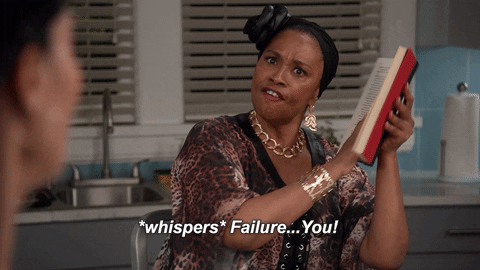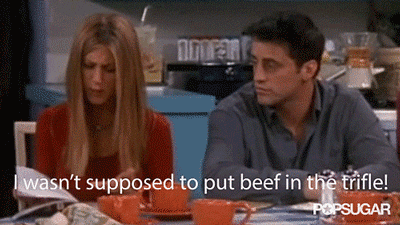
★★
G.P. Putnam’s Sons | 2020
Filed Under: How much did Fatty Arbuckle actually weigh?
You might think you’re getting a book about “murder, forensics and the birth of American CSI,” when you pick this up, and that’s exactly what I thought, too. Because that’s exactly what they put in the fucking title. But why should titles ever tell you what you’re going to be reading about, I guess?
What you’re actually getting here is a choppy, mishmash of relatively boring cases and life stories about Oscar Heinrich, the “American Sherlock.” If I had known this was going to be about one man’s life, and not a historical rundown of the evolution of forensic sciences centred around different murder cases, I probably wouldn’t have read it.
But since I did, it’s necessary to note that I have no issue with a true-life story about a remarkable human who deserves to be applauded. It’s in the execution where this one falls apart.
I think this book is best described as the trifle Rachel makes on Friends. It was almost good, but something got fudged up so no one really wanted to eat it.

The events of this book aren’t sequential, which isn’t necessarily a problem except that there was so much space created between chapter drop-offs that any momentum to the pacing was killed and required a forensic expert to find out what the fuck happened. Someone call Gil Grissom.
The reader is repeatedly given some ominous cliffhanger at the end of a chapter, but we don’t come back to the resolution for that until eleventy-hundred pages later after multiple jumps between time and events. Then the wrap-up is less than adequate, almost as if the author forgot that mysterious new information had been alluded to.

After the third or fourth time, you start to realize that the cliffhanger line is a bunch of bullshit meant to trick the reader into slogging through another hundred pages of out-of-order events, endless discussion on Heinrich’s obsession with finances (he never hits any kind of bottom so I don’t know why we needed to keep harping on this,) and tangents from the author that only served to highlight a tedious writing style that slowed the pace to a near crawl.
I also found it borderline hilarious, but mostly confusing, that Heinrich is held up as a god in the forensic community, described as a genius and trailblazer who has solved thousands of cases with his techniques (which is all true,) but most of the cases that are used as examples in the book are ones where his testimony contributes to no indictment being returned, or mistrials and acquittals.
The rape case against Fatty Arbuckle was the most interesting part of all of this, but again, there wasn’t a real resolution to this as each trial resulted in hung juries after Heinrich’s expert testimony.

It’s clear that Heinrich is a very important figure in forensic science, but this book seemed to only do him a disservice from my standpoint. It was sloppy, hard to follow the advances he made in the field and when; and the cases examined didn’t portray him in the best light, at some points only showing him as obsessed with a dick-measuring competition with another forensic scientist, instead of focusing on the case he’d been hired to investigate.
I’m not really sure what I should be taking from this other than hoping someone else writes a better book about Heinrich so we can get a clearer understanding of who he was and what he did.
This wasn’t “bad,” it’s just garbled and boring when it shouldn’t have been considering the main subject.

🔪🔪🔪

The story of the birth of criminal investigation in the twentieth century.
Berkeley, California, 1933. In a lab filled with curiosities–beakers, microscopes, Bunsen burners, and hundreds upon hundreds of books–sat an investigator who would go on to crack at least two thousand cases in his forty-year career. Known as the “American Sherlock Holmes,” Edward Oscar Heinrich was one of America’s greatest–and first–forensic scientists, with an uncanny knack for finding clues, establishing evidence, and deducing answers with a skill that seemed almost supernatural.
Heinrich was one of the nation’s first expert witnesses, working in a time when the turmoil of Prohibition led to sensationalized crime reporting and only a small, systematic study of evidence. However with his brilliance, and commanding presence in both the courtroom and at crime scenes, Heinrich spearheaded the invention of a myriad of new forensic tools that police still use today, including blood spatter analysis, ballistics, lie-detector tests, and the use of fingerprints as courtroom evidence. His work, though not without its serious–some would say fatal–flaws, changed the course of American criminal investigation.
Based on years of research and thousands of never-before-published primary source materials, American Sherlock captures the life of the man who pioneered the science our legal system now relies upon–as well as the limits of those techniques and the very human experts who wield them.



“…the cliffhanger line is a bunch of bullshit meant to trick the reader into slogging through another hundred pages of out-of-order events…” This cracked me up. 😂
Hope your next read is awesome!
LikeLike
This sounds like a mess, honestly. And what a shame considering the subject matter. also WHY do books mislead with titles and/or synopses? My biggest pet peeve is thinking I am going to read one book and get something else.
LikeLike